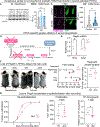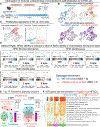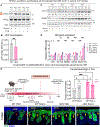The integrated stress response fine-tunes stem cell fate decisions upon serine deprivation and tissue injury
- PMID: 40513561
- PMCID: PMC12210826
- DOI: 10.1016/j.cmet.2025.05.010
The integrated stress response fine-tunes stem cell fate decisions upon serine deprivation and tissue injury
Abstract
Epidermal stem cells produce the skin's barrier that excludes pathogens and prevents dehydration. Hair follicle stem cells (HFSCs) are dedicated to bursts of hair regeneration, but upon injury, they can also reconstruct, and thereafter maintain, the overlying epidermis. How HFSCs balance these fate choices to restore physiologic function to damaged tissue remains poorly understood. Here, we uncover serine as an unconventional, non-essential amino acid that impacts this process. When dietary serine dips, endogenous biosynthesis in HFSCs fails to meet demands (and vice versa), slowing hair cycle entry. Serine deprivation also alters wound repair, further delaying hair regeneration while accelerating re-epithelialization kinetics. Mechanistically, we show that HFSCs sense each fitness challenge by triggering the integrated stress response, which acts as a rheostat of epidermal-HF identity. As stress levels rise, skin barrier restoration kinetics accelerate while hair growth is delayed. Our findings offer potential for dietary and pharmacological intervention to accelerate wound healing.
Keywords: dietary intervention; epidermal stem cells; fate selection; hair follicle stem cells; hair regrowth; integrated stress response; serine metabolism; tissue regeneration; tissue repair; wound healing.
Copyright © 2025 The Authors. Published by Elsevier Inc. All rights reserved.
Conflict of interest statement
Declaration of interests E.F. serves on the Editorial Boards of Cell, Cell Stem Cell, and Developmental Cell.
Figures






References
MeSH terms
Substances
Grants and funding
LinkOut - more resources
Full Text Sources
Medical
Molecular Biology Databases
Research Materials
Miscellaneous

